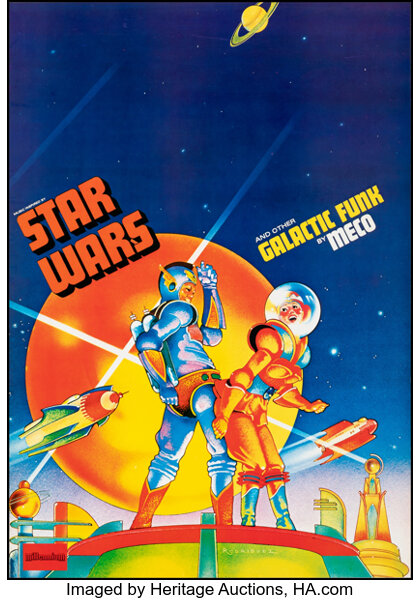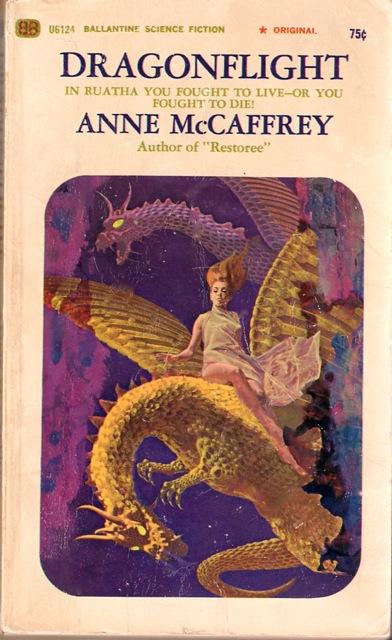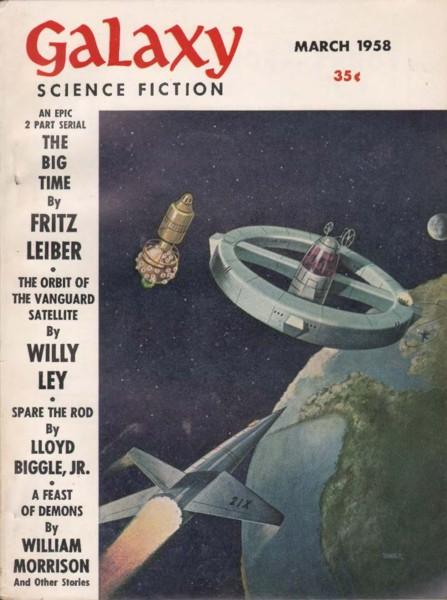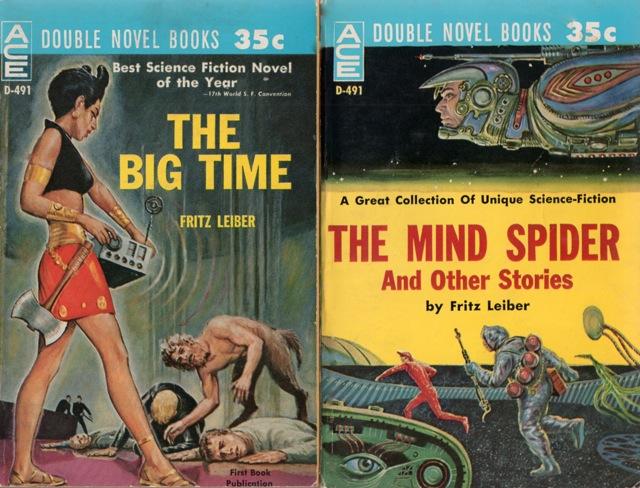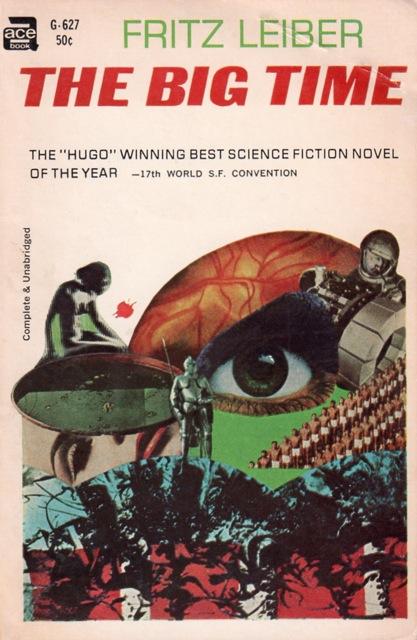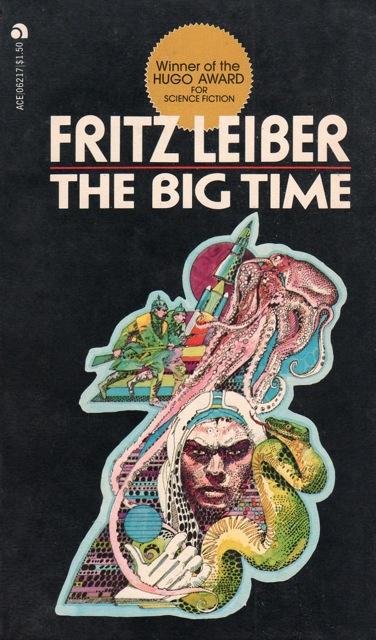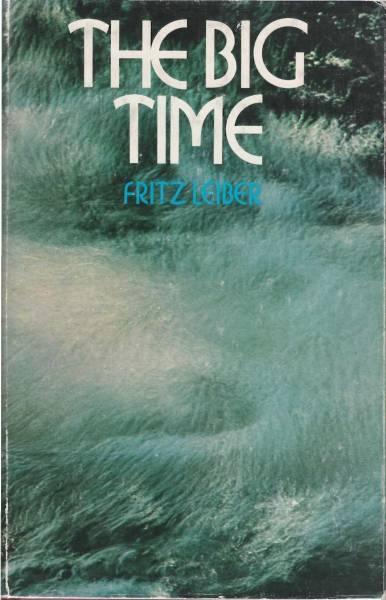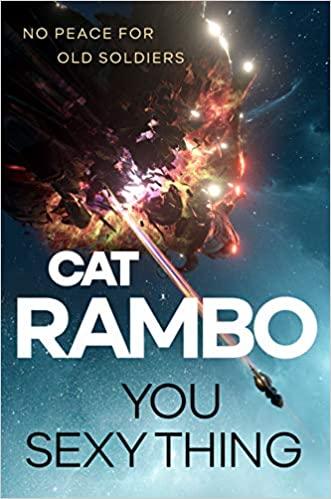(1) SALAM AWARD OPENS FOR ENTRIES. The Salam Award for Imaginative Fiction, which recognizes emerging speculative fiction writers of Pakistani origin or residence, is taking submissions through July 31. Full guidelines at the link.
Eligible for consideration are original, previously unpublished English-language stories of 10,000 words or less by persons residing in Pakistan, or of Pakistani birth/descent. The full guidelines are at the link.
The Salam Award for Imaginative Fiction is named for Dr. Albus Salam, one of the pioneers of science in Pakistan.

(2) TIME FOR NOMMO AWARDS NOMINATIONS. The African Science Fiction Society has announced the 2025 Nommo Awards nominations are now open for works published in 2024.
Only works of speculative fiction by an African published between 1 January 2024 and 31 December 2024 anywhere in the world are eligible.
ASFS members have until May 5 to make nominations. Please read the Nommo Awards eligibility and rules on this link here.
(3) NOTE ABOUT WORLD FANTASY AWARDS SUBMISSIONS. With the June 1 deadline not far off, Peter Dennis Pautz of the World Fantasy Awards Administration has issued a reminder:

I’ve heard from all the World Fantasy Awards judges and their receipt of submissions has been extremely inconsistent, i.e. not all judges have received the same submissions.
As the deadline draws near, we are especially concerned about the lack of submissions from the larger publishers, both in the US and UK.
If you have already sent in your submission, please check your records to ensure that a copy of every work was sent to each judge, in their preferred formats, as detailed in the attachment.
If you haven’t sent your submission as yet, please do so as soon as possible to allow full consideration to your works.
Finally, the judges have also asked that you not send drop box, zip files, or wetransfer links. The links often expire before the judges get to them, and it requires a lot of time to open the links and side load the files to ereaders. Sending three or four titles at a time by email is preferable/
As always, thank you all for your support, your thoughtfulness, and your help.
See the list of judges and their contact information here: “2025 World Fantasy Awards Judges Announced”.
(4) JUDGE’S RULING PAUSES IOWA CENSORSHIP. [Item by Andrew Porter.] “Iowa law banning books including 1984 and Ulysses blocked by US federal judge” reports the Guardian. Books unconstitutionally caught up in the law include Brave New World by Aldous Huxley, Slaughterhouse-Five by Kurt Vonnegut, and 1984 by George Orwell.
A lawsuit brought by publishers and authors including John Green and Jodi Picoult has led to a portion of a law banning Iowa school libraries and classrooms from carrying books depicting sex acts being halted.
On Tuesday, a federal judge temporarily blocked the measure, writing that it had been applied unconstitutionally in many schools and that books of “undeniable political, artistic, literary, and/or scientific value” had been caught up in it, including Ulysses by James Joyce, Nineteen Eighty-Four by George Orwell, Beloved by Toni Morrison and The Kite Runner by Khaled Hosseini.
This is the second time that US district judge Stephen Locher, a Joe Biden appointee, has blocked the ban. The law, Senate File 496, was first approved by Iowa’s Republican-led legislature and governor Kim Reynolds in 2023, however, Locher placed an injunction on it in December 2023 after authors and publishers sued the state.
The preliminary injunction was reversed by the US Eighth Circuit appeals court last August, leading publishers and authors to file a second complaint, arguing that the ban violates free speech and “goes far beyond prohibiting books that are obscene as to minors because it prohibits books with even a brief description of a sex act for students of all ages without any evaluation of the book as a whole”.
In his decision, Locher wrote that the ban has resulted in “forced removal of books from school libraries that are not pornographic or obscene”, and that unconstitutional applications of the law “far exceed” constitutional applications….
(5) DIVERSITY TAKES STEP BACK IN UK PUBLISHING. The Guardian learns “UK publishing less accessible to Black authors now than before 2020, industry names say”.
UK publishing is less accessible to Black authors now than it was five years ago, according to some of the biggest names in the industry.
The Black Lives Matter movement of 2020 led to many publishing houses making commitments to address the longstanding racial inequality in the industry. But, ahead of the Black British book festival (BBBF) this weekend, a number of Black literary figures say there has been a noticeable downward shift in the number of Black writers being published.
Selina Brown, who founded BBBF in 2021, said the number of Black authors being pitched to her has dropped dramatically in the last 18 months. She also believes the number of books being published by Black writers has “plummeted”….
…Sharmaine Lovegrove, cultural strategist at Hachette UK, one of the country’s leading publishing houses, co-founded The Black Writers’ Guild and established Hachette’s Dialogue imprint, which focuses on books by, about and for marginalised communities. She said things are harder for new Black authors now than they were pre-2020….
Lovegrove said the industry hasn’t been able to build new, diverse audiences and struggled to talk and cater to Black authors who were often labelled “difficult” for advocating for themselves.
Lovegrove said: “The biggest mistake was seeing it as a trend as opposed to an opportunity to cultivate something meaningful that was missing.”
“It’s as if the industry is saying: ‘It’s all very difficult and these books haven’t done very well so we’re literally not going to try again with someone from the same background’,” she added. “It’s the craziest thing I’ve ever heard.”
A report by PA found that “ethnic minority” representation across the industry fell from 17% to 15% in 2024, with a decline in the numbers of Asian and British Asian staff. The number of Black staff remained at about 3% during the same period.
There have been success stories. After selling more than a million copies of Why I’m No Longer Talking to White People About Race, Reni Eddo-Lodge launched her Monument Books imprint at HarperCollins last year, with the specific goal of finding writers “who can help us understand our past, navigate our present and map new futures”.
But Brown says the impetus of 2020 has faded and new Black authors have often seen their books marketed the same way as other authors despite publishers speaking of wanting to “reach new audiences”….
(6) TOLKIEN’S CARTOGRAPHY. “It’s Tolkien Reading Day” – a Facebook post from yesterday by the Bodleian Libraries. (Click for larger image.)
It’s Tolkien Reading Day, so we wanted to share with you a rather magical treasure from our Tolkien archives and invite you to share your favourite moments as a Tolkien reader.
Pictured is an annotated version of a fold-out map which was included in early editions of the Lord of The Rings. The map shows readers Tolkien’s fantasy world ‘Middle-earth’.
The annotations are by Tolkien himself, and were for the benefit of Pauline Baynes, an artist who was creating an illustrated poster map of Middle-earth.
Baynes ripped the map out of her own 1954 copy of Lord of the Rings and took it to Tolkien, who covered it with notes, including many extra place names that do not appear in the book. Since most were in his own invented Elvish language he helpfully translated some: ‘Eryn Vorn [= Black Forest] a forest region of dark [pine?] trees.’
The annotations give an insight into how vividly Tolkien pictured Middle-earth in his mind, and how thorough his research was. They include a series of geographical pointers about the latitude of key locations: ‘Hobbiton is assumed to be approx. at latitude of Oxford,’. ‘Minas Tirith is about latitude of Ravenna (but is 900 miles east of Hobbiton more near Belgrade). Bottom of the map (1,400 miles) is about latitude of Jerusalem.’
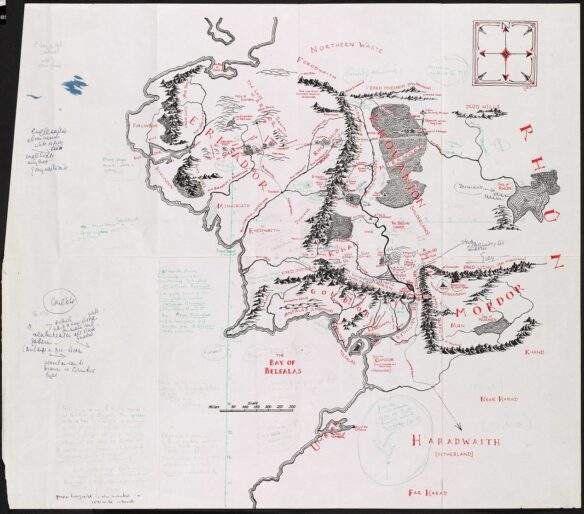
(7) MAPPING GENRE LOVE. “The Most Popular Book Genre In Each State” – BookRiot says a research firm came up with a rationale for assigning them. Map at the link.
Are there different preferences for book genres depending on what state you’re in? According to new research from Cloudwards, there are trends in book preferences based on location.
Utilizing Google Trends data over the last 12 months, Cloudwards explored the most searched genre in each of the 50 states, plus the District of Columbia. All searches were limited to Google Trends “Books and Literature” category, and the researchers used a variety of common genre terms to determine the frequency of interest in them by state. Some of the genre categories were a little unconventional for the average reader–how do you determine the difference between “fiction” and “family” as terms–but the major genres were included, including romance, fantasy, mystery, and so forth….
… Romance dominated in terms of genre popularity across the US, with 22 states seeing it as their top searched genre. In terms of geographic region, romance was especially popular in the south, with states like Florida, Georgia, Louisiana, Tennessee, Kentucky, and Virginia ranking it as their top genre.
Fiction and poetry tied for next most popular genres, each either nine states reporting it as the most searched genre. The researchers note that these findings aren’t surprising, given that fiction is broad and encompassing. As for poetry, it is likely not surprising to see people looking for more information about poetry; the research here isn’t about poetry being the most read genre, but rather, one of the most researched genres….
(8) REASON TO BE SCARED BY THE PHONE BILL. Atlas Obscura remembers “The Heyday of Horror Hotlines and Why We Still Love to Fear the Phone”.
IT’S NO ACCIDENT FREDDY KRUEGER is the most famous monster of the last 50 years….
…So of course Freddy would capitalize on one of his decade’s definitive devices: the telephone. In the late 1980s you could communicate with Krueger on your home phone (after you “get your parents’ permission,” of course) through the awesome telecommunicative power of the hotline. Dialing 1-900-909-FRED connected brave teens to a running tape of short ghost stories, each introduced by Freddy Krueger like a malevolent MTV VJ throwing to Paula Abdul videos…
HAHAHAHAHAHAHA. IT’S TIME FOR ANOTHER ONE OF FREDDY’S FAVORITE BEDTIME STORIES. AND THIS ONE’S A DREAM—MY KIND OF DREAM: THE KIND YOU DON’T WAKE UP FROM…You can listen to 40 consecutive minutes of this stuff on YouTube, thanks to some intrepid young Gen-Xer who owned a tape deck and I guess was willing to catch hell from their parents when the phone bill arrived….
(9) L.J. SMITH (1958-2025.) L. J. Smith, author of The Vampire Diaries, died March 8 at the age of 66.
Her first book, The Night of the Solstice, written during high school and college, was published by MacMillan in 1987.
The New York Times obituary explains that the Vampire Diaries publisher eventually moved on from Smith to a ghostwriter, and how Smith recovered her characters by writing fanfiction.
…The first three books in The Vampire Diaries series were published by HarperCollins in 1991, and a fourth was released in 1992. But Ms. Smith — whose first agent was her typist, who had never represented a client — told The Wall Street Journal that she had written the trilogy for an advance of only a few thousand dollars without realizing that it was work for hire, meaning she did not own the copyright or the characters….
…In 2009, “The Vampire Diaries” were adapted into a dramatic television series that lasted for eight seasons on the CW Network….
…By 2014, the “Vampire Diaries” book series had sold more than five million copies, but Ms. Smith was no longer writing the authorized version: Alloy Entertainment fired her in 2011 over what its president and founder, Leslie Morgenstein, told The Wall Street Journal were creative differences.
A ghostwriter and then an author using the pen name Aubrey Clark were brought in to complete the final six books in the series. Ms. Smith said in interviews that she had believed that Alloy and HarperCollins wanted shorter books more closely associated with the TV series. They continued to put Ms. Smith’s name prominently on the cover of the books as the series’ creator….
…Eventually, Ms. Smith found an outlet to reclaim her characters — fan fiction, which book lovers have long written and posted, spooling out their own amateur versions of stories and characters even though they did not own the intellectual property and it was often not strictly legal.
In 2013, Amazon created Kindle Worlds, an online service that gave writers of fan fiction permission to write about certain licensed properties, including Alloy’s “Vampire Diaries” series, and to earn money for their ventures.
In 2014, Ms. Smith became the rare celebrated author to produce fan fiction as a way to recoup characters and story arcs she had lost, publishing a novel and novella in an informal continuation of the “Vampire Diaries.” (Kindle Worlds was discontinued in 2018)….
(10) TODAY’S BIRTHDAY.
[Item by Paul Weimer.]
March 26, 1931 — Leonard Nimoy. (Died 2015.)
By Paul Weimer: It is fitting that Leonard Nimoy’s birthday should only be a couple of days after William Shatner’s. Sure, like Shatner himself, Nimoy is much more than his Star Trek character. But then again, he is the one who felt it necessary to write a book called I am Not Spock. Shatner never had to do the same for Kirk.
Why that is is because Nimoy brings a human alienness to Spock that no iteration of him since has quite managed. There are several Spocks running around now in movie and series history, but Nimoy’s is the one that sticks, the one that is the definitive article. The brainiac logic-fueled half human…who nevertheless shows real passion and anger in “Amok Time”, and especially at the utter joy that Kirk has in fact survived after all. Or learning the limits of logical action in “The Gaileo Seven”. Nimoy’s Spock was always learning, always growing, always becoming better (a lesson Spiner would apply to Data). The whole journey of Spock’s death, resurrection, and return to normal through the Star Trek movies shows a whole gamut of emotions and character growth. Nimoy sells all of that.
But Nimoy was more than that. He was the narrator of In Search Of, and I remember watching that for the first time and wondering why the voice was familiar on the episode, and only learning a couple of months later it was, in fact, “Spock”. I also enjoyed his secondary role in the 1978 Invasion of the Body Snatchers. He also directed a number of movies as well, and became a producer, later, in the bargain. When I finally got to watching the original Mission Impossible (which I had only seen scattershot growing up), I was delighted to find he was there, too, as a master of disguise and immersion, Paris.
Later in life, he had a role in a number of episodes of Fringe.
On top of all that, you probably know about his music, if for nothing else than “The Ballad of Bilbo Baggins.”. But did you know he was also a rather good photographer? In a world next door, he pursued that to the fullest rather than acting. As it is, the work he has done has been exhibited in major museums.
Such a diverse and strong and polymathic artistic talent. I wish I could have met him, but he died in 2015. Requiescat in pace.

(11) COMICS SECTION.
- Dinosaur Comics poses a past/future riddle.
- Jerry King has an employer with a risky idea.
- Tom Gauld finds a place that didn’t believe in “safety first”.
(12) INTRODUCING BETWEEN A ROCKET AND A HARD SPACE. The International Space Station (ISS) National Laboratory is launching Between a Rocket and a Hard Space, the official ISS National Lab podcast. This podcast series dives deep into the discoveries, innovations, and people shaping the future of space, with the first episode now available.

The podcast’s name is a nod to the challenges and complexities of exploring the space environment, with recognition of the far-reaching benefits space-based R&D may bring. Going beyond the launch pad, Between a Rocket and a Hard Space offers exclusive insights from scientists, engineers, and visionaries leveraging the unique environment of low Earth orbit to push the boundaries of research and technology development. But that’s just the beginning. We’ll also hear from policymakers driving the industry forward, financial experts fueling the space economy, and communicators working to inspire the next generation of explorers.
In the first episode, host Patrick O’Neill sits down with ISS National Lab Chief Scientific Officer Michael Roberts to explore the groundbreaking science happening on the orbiting outpost and its real-world impact on medicine, technology, and industry. Roberts will provide an insider perspective into how microgravity is unlocking advancements in drug development, regenerative medicine, advanced materials, and in-space manufacturing.
Episodes of Between a Rocket and a Hard Space will be available through many major listening platforms, including Apple Podcasts, Spotify, YouTube, iHeartRadio, TuneIn, Alexa, Overcast, Pocket Casts, Castro, and Castbox.
(13) KEEP YOUR EYE ON THE HOLE. “’So Much Good Science’: The Black Hole Visuals In Christopher Nolan’s $759M Oscar-Nominated Sci-Fi Movie Called ‘One Of The Most Accurate Depictions Of The Environment’ By Expert, Who Gives It A Near-Perfect Score” at ScreenRant.
… An expert speaks about the black holes in Intersellar. The 2014 sci-fi movie tells the story of a former NASA pilot named Cooper (Matthew McConaughey) who re-enters space exploration in order to help locate a new planet for humans when Earth becomes uninhabitable. The film features a leading cast including McConaughey, Anne Hathaway, Matt Damon, John Lithgow, Jessica Chastain, and a young Timothée Chalamet. Interstellar made over $758 million at the box office, and ultimately ended up as one of Nolan’s lower-rated films in terms of Rotten Tomatoes score, getting a 73%…
… Speaking with Insider, astrophysicist Paul M. Sutter discusses Interstellar‘s black hole visuals, giving them a high accuracy rating. Sutter said there is “so much good science in the black hole image,” noting how well Nolan’s film maps the behavior of light in relation to a black hole. The expert also explains how Newton’s third law impacts how Cooper is acting in the key black hole scene. Ultimately, he gave Interstellar‘s black hole accuracy a 9 out of 10. Check out the full quote from Sutter below:
So much good science in the black hole image. Light follows the curves, the hills and valleys of spacetime. And these curves are set by massive objects. This is one of the earliest tests of Einstein’s theory of relativity. And black holes bend space a lot, and so what we are seeing is there’s a thing disk called an an accretion disk surrounding the black hole. But if you’re standing on one side of the black hole, light from the back end — which normally you wouldn’t see because you know, black hole in the way — there’s light that’s going up this way but then gets bent and curves right to you.
Newton’s third law is for every action, there is an equal and opposite reaction. And this is in the fundamental basis for space travel. We push against the air to get our airplanes to go. But in space there’s no ground, there’s no air. So we can only push against ourselves. If we throw something away from us, that propels us in the equal and opposite direction. So what I think he’s going for, old Cooper, is to get him away from that orbit, if he pushes something towards the black hole, that will nudge the spacecraft away from that orbit, and give it a safe escape.
The event horizon is the one way barrier. This is the edge of the black hole. This is the point of no return. That if you cross the event horizon, that gravity is so strong, that nothing, not even light can escape.
When Cooper first falls through the black hole, then he goes ‘oh, everything’s black.’ No, like you’re not the only thing falling into a black hole. There’s light from the entire rest of the universe that’s falling in with you. For a supermassive black hole like this, like Gargantua in the movie, you’ve got a handful of seconds from the moment you cross the event horizon to the time you hit the singularity.
That was an incredibly accurate depiction. In fact, it is one of the most accurate depictions of the environment around a black hole ever made. I would give it a 9. Okay a point off because it is not actually dark in there. But honestly, we don’t know what actually happens inside of a black hole, so that’s fair game….
(14) IS THIS A SPOILER? It is if the fan is right. “43 years later, John Carpenter has hinted at who turns into The Thing in the horror movie and one eagle-eyed fan has worked it out” at GamesRadar+
It’s been 43 years since legendary director John Carpenter’s The Thing hit screens, but the mystery behind which character turns into the fearsome monster has remained shrouded in secrecy, until now. And one fan has worked it out.
At a special 4K screening of The Thing at David Geffen Theater on March 22, Carpenter revealed that a scene in the middle of the movie reveals whether Kurt Russell’s R.J. MacReady or Keith David’s Childs is The Thing. “I think I found that hint,” said Joe Russo (a film fan not the Marvel director) on Twitter.As pointed out by Russo, MacReady is informed that The Thing can replicate at the cellular level, so to be safe they should only drink and eat what they have prepared themselves. Despite the warning, toward the end of the movie, MacReady shares a bottle of liquor with Childs, which could mean that he is either rather forgetful or he is, in fact, The Thing. “As soon as Childs drinks from the bottle, The Thing has won. It’s beaten its most skeptical, final threat,” says Russo…
More details at the link.
(15) ASSEMBLY REQUIRED. “’Avengers: Doomsday’ Cast: Chris Hemsworth, Anthony Mackie and More” – Variety covers the announcement. (If you have five-and-a-half hours to spare, you can watch it yourself here: “Avengers: Doomsday | Cast Announce”.)
The Avengers have assembled once again. Marvel slowly revealed the full cast of “Avengers: Doomsday” in a livestream that began Wednesday morning.
Among the returning cast members are Chris Hemsworth as Thor; Anthony Mackie as Sam Wilson, who debuted as Captain America in last month’s “Brave New World”; his co-star Danny Ramirez as Joaquin Torres, the new Falcon; Sebastian Stan as Bucky Barnes, the Winter Soldier; Paul Rudd as Scott Lang/Ant-Man; Tom Hiddleston as Loki; Letitia Wright as Shuri, who took over the Black Panther mantle in “Wakanda Forever,” and her co-star Winston Duke as M’Baku. As previously announced, Robert Downey Jr. will be back as the villain Doctor Doom instead of Iron Man.
The biggest surprises were several returning “X-Men” stars for “Avengers: Doomsday.” The mutant cast includes Patrick Stewart, whose Professor Charles Xavier was killed off in both “Logan” and “Doctor Strange in the Multiverse of Madness” but appears to be back; Ian McKellen, who was last seen as Magneto in “X-Men: Days of Future Past”; Kelsey Grammer as Beast, who made a cameo in the post-credits scene of “The Marvels”; Alan Cumming as Nightcrawler from “X2”; James Marsden as Cyclops; Channing Tatum, who played Gambit in “Deadpool & Wolverine”; and Rebecca Romijn, who originated the shape-shifting role of Mystique before Jennifer Lawrence took it over in the “X-Men” prequels.
Some recent Marvel newcomers are also being introduced to the “Avengers” ensemble. They include Pedro Pascal as Mr. Fantastic, Vanessa Kirby as the Invisible Woman, Joseph Quinn as Human Torch and Ebon Moss-Bachrach as the Thing from this summer’s “The Fantastic Four: First Steps”; “Thunderbolts*” stars Florence Pugh as Yelena Belova, David Harbour as Red Guardian, Wyatt Russell as U.S. Agent, Hannah John-Kamen as Ghost, Lewis Pullman as the mysterious Bob; Simu Liu as Shang-Chi; and Tenoch Huerta Mejía, who played the underwater antagonist Namor in “Black Panther: Wakanda Forever.”…
(16) VIDEO OF THE DAY. [Item by SF Concatenation’s Jonathan Cowie.] Grammaticus Books takes a look at a Fritz Leiber fantasy… “Our Lady of Darkness…a look at Fritz LEIBER’S SOUL”.
An in-depth review of Fritz Leiber’s, 1978 dark urban fantasy, OUR LADY of DARKNESS. A thinly veiled autobiography and biopic of Leiber’s life from 1977, from the author most famous for his sword and sorcery tales of Fafhrd and the Grey Mouser.
[Thanks to SF Concatenation’s Jonathan Cowie, Mark Roth-Whitworth, Michael J. Walsh, Steven French, Kathy Sullivan, Teddy Harvia, Mike Kennedy, Andrew Porter, John King Tarpinian, Chris Barkley, and Cat Eldridge for some of these stories. Title credit belongs to File 770 contributing editor of the day Andrew (not Werdna).]







